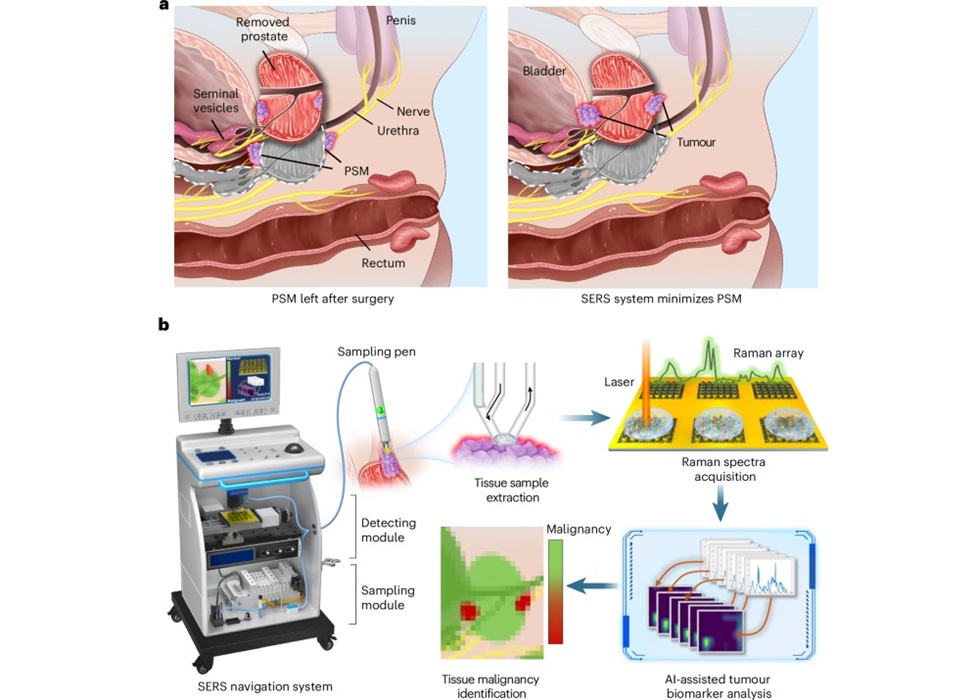E-Cigarettes Increase Vital Signs and Arterial Stiffness
|
By HospiMedica International staff writers Posted on 26 Sep 2017 |

Image: A new study showed an increase in BP, heart rate and arterial stiffness after smoking e-cigarettes (Photo courtesy of PSU).
Significant increases in blood pressure (BP), heart rate, and arterial stiffness are seen in the first 30 minutes after smoking electronic-cigarettes containing nicotine, according to a new study.
Researchers at the Karolinska Institutet (KI; Solna, Sweden) recruited 15 young, healthy volunteers (average age 26, 59% female) who were seldom smokers--smoking a maximum of ten cigarettes a month--and who had not used e-cigarettes before the study. Study participants were randomized to use e-cigarettes with nicotine for 30 minutes on one of the study days, and e-cigarettes without nicotine on the other day. The researchers measured BP, heart rate, and arterial stiffness immediately after smoking the e-cigarettes, and then two and four hours later.
The results showed that in the first 30 minutes after smoking e-cigarettes containing nicotine, there was a significant increase in BP, heart rate, and arterial stiffness; no such effect was seen on heart rate and arterial stiffness in the volunteers who had smoked e-cigarettes without nicotine. Importantly, arterial stiffness increased around three-fold in those who were exposed to nicotine containing e-cigarettes. The study was presented at the European Respiratory Society International Congress, held during September 2017 in Milan (Italy).
“The immediate increase in arterial stiffness that we saw is most likely attributed to nicotine; the increase was temporary. However, the same temporary effects on arterial stiffness have also been demonstrated following use of conventional cigarettes,” said senior author and study presenter Magnus Lundbäck, MD, PhD. “Therefore, we speculate that chronic exposure to e-cigarettes with nicotine may cause permanent effects on arterial stiffness in the long term.”
“The marketing campaigns of the e-cigarette industry target current cigarette smokers and offer a product for smoking cessation. However, several studies question the e-cigarette as a means of smoking cessation, and there is a high risk of double use, where people use both e-cigarettes and conventional cigarettes,” concluded Dr. Lundbäck. “Furthermore, the e-cigarette industry also targets non-smokers with designs and flavors that appeal to a large crowd, even the very young, and that carry the risk of a lifelong nicotine addiction.”
Electronic cigarettes consist of a cartridge containing a liquid with a nicotine concentration of 11mg/ml and a battery powered heating element that evaporates the liquid, simulating the effect of smoking by producing an inhaled vapor that is less toxic than that of regular cigarettes. They were first developed by Herbert Gilbert in 1963, but the dawn of the modern e-cigarette is attributed to Chinese pharmacist Hon Lik, who introduced them as a smoking cessation device in 2004.
Related Links:
Karolinska Institutet
Researchers at the Karolinska Institutet (KI; Solna, Sweden) recruited 15 young, healthy volunteers (average age 26, 59% female) who were seldom smokers--smoking a maximum of ten cigarettes a month--and who had not used e-cigarettes before the study. Study participants were randomized to use e-cigarettes with nicotine for 30 minutes on one of the study days, and e-cigarettes without nicotine on the other day. The researchers measured BP, heart rate, and arterial stiffness immediately after smoking the e-cigarettes, and then two and four hours later.
The results showed that in the first 30 minutes after smoking e-cigarettes containing nicotine, there was a significant increase in BP, heart rate, and arterial stiffness; no such effect was seen on heart rate and arterial stiffness in the volunteers who had smoked e-cigarettes without nicotine. Importantly, arterial stiffness increased around three-fold in those who were exposed to nicotine containing e-cigarettes. The study was presented at the European Respiratory Society International Congress, held during September 2017 in Milan (Italy).
“The immediate increase in arterial stiffness that we saw is most likely attributed to nicotine; the increase was temporary. However, the same temporary effects on arterial stiffness have also been demonstrated following use of conventional cigarettes,” said senior author and study presenter Magnus Lundbäck, MD, PhD. “Therefore, we speculate that chronic exposure to e-cigarettes with nicotine may cause permanent effects on arterial stiffness in the long term.”
“The marketing campaigns of the e-cigarette industry target current cigarette smokers and offer a product for smoking cessation. However, several studies question the e-cigarette as a means of smoking cessation, and there is a high risk of double use, where people use both e-cigarettes and conventional cigarettes,” concluded Dr. Lundbäck. “Furthermore, the e-cigarette industry also targets non-smokers with designs and flavors that appeal to a large crowd, even the very young, and that carry the risk of a lifelong nicotine addiction.”
Electronic cigarettes consist of a cartridge containing a liquid with a nicotine concentration of 11mg/ml and a battery powered heating element that evaporates the liquid, simulating the effect of smoking by producing an inhaled vapor that is less toxic than that of regular cigarettes. They were first developed by Herbert Gilbert in 1963, but the dawn of the modern e-cigarette is attributed to Chinese pharmacist Hon Lik, who introduced them as a smoking cessation device in 2004.
Related Links:
Karolinska Institutet
Latest Critical Care News
- Magnetically Guided Microrobots to Enable Targeted Drug Delivery

- Smart Nanomaterials Detect and Treat Traumatic Brain Injuries Simultaneously
- Earlier Blood Transfusion Could Reduce Heart Failure and Arrhythmia in Heart Disease Patients
- 'Smart' Shirt Detects Epileptic Seizures in Real Time
- Skin Patch Measures Effectiveness of Flu/COVID Vaccines in 10 Minutes
- Complete Revascularization Reduces Risk of Death from Cardiovascular Causes
- Tiny Fish-Inspired Robots Navigate Through Body to Deliver Targeted Drug Therapy
- Coronary Artery Stenosis Could Protect Patients from Pulmonary Embolism Effects
- Sweat-Powered Sticker Turns Drinking Cup into Health Sensor
- Skin-Mounted 3D Microfluidic Device Analyzes Sweat for Real-Time Health Assessment
- New Therapeutic Brain Implants to Eliminate Need for Surgery
- Stem Cell Patch Gently Heals Damaged Hearts Without Open-Heart Surgery
- Biomaterial Vaccines to Make Implanted Orthopedic Devices Safer
- Deep Learning Model Predicts Sepsis Patients Likely to Benefit from Steroid Treatment
- Programmable Drug-Delivery Patch Promotes Healing and Regrowth After Heart Attack
- Breakthrough Ultrasound Technology Measures Blood Viscosity in Real Time
Channels
Surgical Techniques
view channel
Breakthrough Surgical Device Redefines Hip Arthroscopy
Hip arthroscopy has surged in popularity, yet surgeons still face major mechanical constraints when navigating deep joint spaces through traditional cannulas. Limited tool mobility and the need for an... Read more
Automated System Enables Real-Time "Molecular Pathology" During Cancer Surgery
Accurately identifying tumor boundaries during radical prostatectomy remains one of the most persistent challenges in prostate cancer care. Positive surgical margins occur in up to 40% of cases, increasing... Read morePatient Care
view channel
Revolutionary Automatic IV-Line Flushing Device to Enhance Infusion Care
More than 80% of in-hospital patients receive intravenous (IV) therapy. Every dose of IV medicine delivered in a small volume (<250 mL) infusion bag should be followed by subsequent flushing to ensure... Read more
VR Training Tool Combats Contamination of Portable Medical Equipment
Healthcare-associated infections (HAIs) impact one in every 31 patients, cause nearly 100,000 deaths each year, and cost USD 28.4 billion in direct medical expenses. Notably, up to 75% of these infections... Read more
Portable Biosensor Platform to Reduce Hospital-Acquired Infections
Approximately 4 million patients in the European Union acquire healthcare-associated infections (HAIs) or nosocomial infections each year, with around 37,000 deaths directly resulting from these infections,... Read moreFirst-Of-Its-Kind Portable Germicidal Light Technology Disinfects High-Touch Clinical Surfaces in Seconds
Reducing healthcare-acquired infections (HAIs) remains a pressing issue within global healthcare systems. In the United States alone, 1.7 million patients contract HAIs annually, leading to approximately... Read moreHealth IT
view channel
Printable Molecule-Selective Nanoparticles Enable Mass Production of Wearable Biosensors
The future of medicine is likely to focus on the personalization of healthcare—understanding exactly what an individual requires and delivering the appropriate combination of nutrients, metabolites, and... Read moreBusiness
view channel
Philips and Masimo Partner to Advance Patient Monitoring Measurement Technologies
Royal Philips (Amsterdam, Netherlands) and Masimo (Irvine, California, USA) have renewed their multi-year strategic collaboration, combining Philips’ expertise in patient monitoring with Masimo’s noninvasive... Read more
B. Braun Acquires Digital Microsurgery Company True Digital Surgery
The high-end microsurgery market in neurosurgery, spine, and ENT is undergoing a significant transformation. Traditional analog microscopes are giving way to digital exoscopes, which provide improved visualization,... Read more
CMEF 2025 to Promote Holistic and High-Quality Development of Medical and Health Industry
The 92nd China International Medical Equipment Fair (CMEF 2025) Autumn Exhibition is scheduled to be held from September 26 to 29 at the China Import and Export Fair Complex (Canton Fair Complex) in Guangzhou.... Read more












